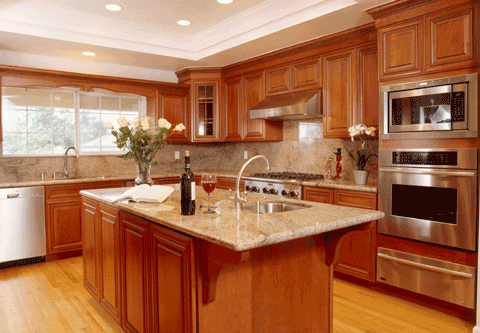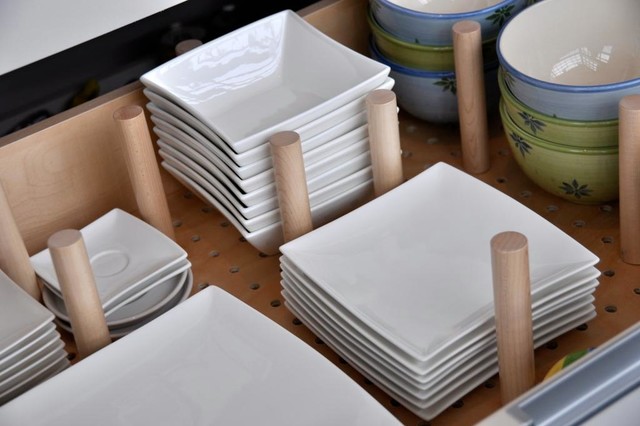Remodeling your kitchen can be a rewarding and exciting project, but it's also a significant undertaking that requires careful planning and execution. From setting a budget and designing the layout to choosing materials and hiring a contractor, there are many steps involved in the kitchen remodeling process. In this article, we will go over each step in detail and provide tips for ensuring a successful and stress-free kitchen remodel. Whether you are looking to update a few elements or completely transform your space, following these steps can help you achieve the kitchen of your dreams.
Set Your Budget
Setting your budget is an important first step in any kitchen remodeling project. It will help you determine the scope of your project and make financial decisions throughout the process. Before you begin, take some time to consider how much you can afford to spend on your kitchen remodel. Be sure to factor in the cost of materials, labor, and any additional features you may want to add. It's also a good idea to set aside a contingency fund in case you encounter any unexpected expenses during the course of your project. By setting a budget upfront, you can help ensure that your kitchen remodel stays on track and within your financial means.
Plan Your Design
There are a few specific steps you can take to help plan your kitchen design:
- Measure your space: Before you start sketching out your design, it's important to accurately measure the dimensions of your kitchen. This will help you determine the size and layout of your new features and ensure that everything fits properly.
- Make a list of your needs and wants: Consider what you need in your kitchen and what you would like to have. For example, do you need more storage space or do you want to add an island? Make a list of your priorities to help guide your design decisions.
- Research different design styles: Look at design magazines, browse online, and visit showrooms to get an idea of the different styles and features available. This will help you decide on the look and feel you want for your kitchen.
- Sketch out a rough plan: Once you have a good idea of what you want, use graph paper or a kitchen design software to sketch out a rough plan of your kitchen. Be sure to include the layout, appliances, and any new features you want to add.
- Consider the traffic flow: When planning your kitchen layout, think about how people will move through the space. You want to create a layout that is functional and efficient, with enough space for people to move comfortably.
- Don't forget about lighting: Good lighting is essential in a kitchen, so be sure to include it in your design plan. Consider the placement of your windows and the types of light fixtures you will use.
Choose Your Materials
Choosing the right materials for your kitchen remodel is an important decision that will affect the look and feel of your space, as well as its durability and functionality. Some materials to consider for your kitchen include:
- Cabinets: Choose cabinets that are both functional and aesthetically pleasing. There are many types of cabinets to choose from, including stock cabinets, semi-custom cabinets, and custom cabinets.
- Countertops: Select a countertop material that is durable, easy to maintain, and fits your budget. Options include granite, marble, quartz, and laminate.
- Flooring: Choose a flooring material that is durable and easy to clean. Options include tile, wood, and vinyl.
- Appliances: Consider the size and placement of your appliances, as well as their energy efficiency and overall cost.
When choosing your materials, be sure to consider the style, durability, and cost of each option. You may want to consult with a designer or contractor to help you make the best choices for your kitchen.
Hiring A Contractor
Hiring a contractor is an important step in the kitchen remodeling process. A good contractor will be able to bring your kitchen design to life, ensuring that the work is completed to your satisfaction and within your budget. When choosing a contractor, be sure to:
Check references: Ask for references from previous clients and follow up with them to learn about their experiences working with the contractor.
Verify licensing and insurance: Make sure that the contractor is licensed and insured. This will protect you in case of any accidents or injuries that occur during the course of the project.
Read the contract carefully: Before you sign a contract with a contractor, be sure to read it carefully and understand all of the terms and conditions.
By taking the time to find a reputable and qualified contractor, you can help ensure that your kitchen remodel goes smoothly and is completed to your satisfaction.
Demolition
Demolition is the process of tearing out and removing existing features in your kitchen. This can be a necessary step if you are making major changes to your kitchen, such as removing walls or changing the layout. During the demolition process, your contractor will carefully remove any unwanted features, such as cabinets, countertops, and appliances. They will also dispose of any debris and prepare the space for the new features that will be installed.
Install New Features
Once the demolition is complete, it's time to start installing your new kitchen features. This can include installing new cabinets, countertops, and appliances. Depending on your design plan, you may also need to add new electrical outlets, plumbing lines, and lighting fixtures.
Your contractor will carefully install each new feature according to your design plan and any applicable building codes. They will also make any necessary connections, such as hooking up your appliances and installing your sink and faucet.
It's important to keep in mind that the installation process can be time-consuming, and it may take several days or weeks to complete. Be sure to discuss the installation timeline with your contractor and plan accordingly.
Finishing Touches
Once the major work of your kitchen remodel is complete, it's time to add the finishing touches. This can include painting the walls, installing backsplashes, and adding decorative hardware to your cabinets. These small details can make a big difference in the overall look and feel of your kitchen.
When choosing your finishing touches, be sure to consider the style and color scheme of your kitchen. You may want to consult with a designer or use design software to help you visualize the finished product.
In addition to the aesthetic details, be sure to also take care of any necessary repairs or touch-ups. This can include filling in any holes or cracks in the walls, sealing grout lines, and making sure all of your appliances and fixtures are properly installed.
By paying attention to these finishing touches, you can help ensure that your kitchen looks and functions exactly as you envision it.
Final Inspection
Before you consider your kitchen remodel complete, it's important to have a final inspection. This will help ensure the safety and functionality of your new kitchen. Once the inspection is complete and all issues have been resolved, you can consider your kitchen remodel complete.
Tags
Subscribe to Cabinet Wholesalers's Blog










Comments